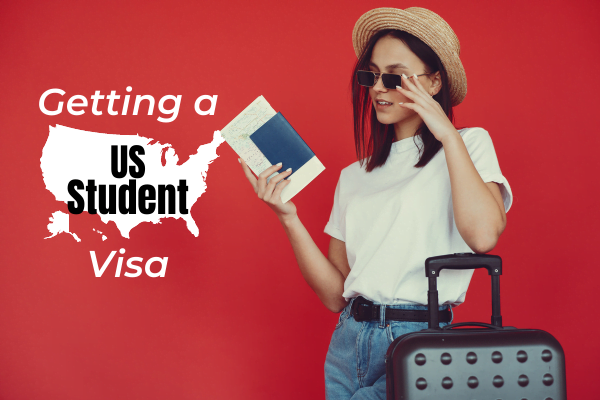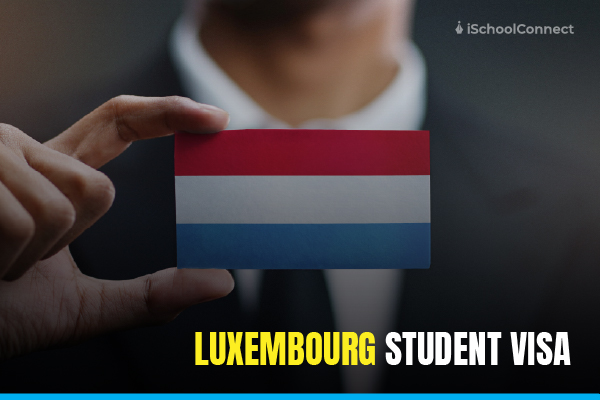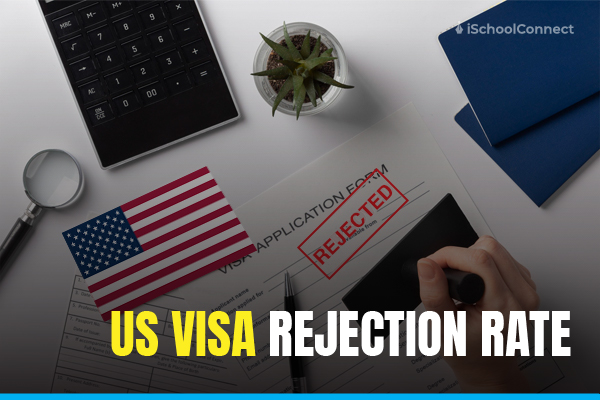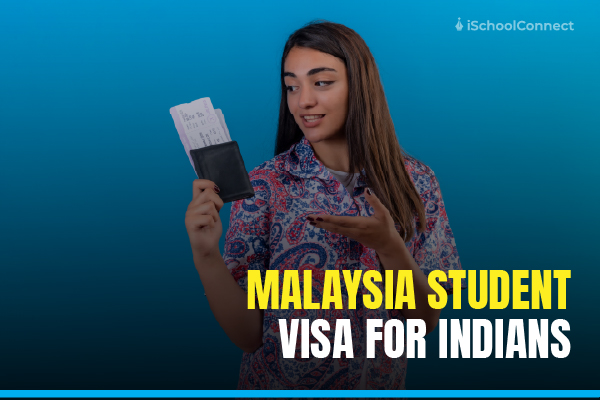Table of Contents
- Types of US Student Visa
- What is an F1 Visa?
- Eligibility Requirements for the F-1 Visa
- Where to Apply for a Student Visa in the USA?
- Your Step-by-Step Guide to the F-1 Visa Application
- Essential Documents for a US Student Visa
- Cost of US Student Visa
- Working on an F1 Visa
- Important Tips for F1 Visa Holders
- Advantages of the F-1 Visa
- Common Challenges and Solutions for F1 Visa Applicants
- Tips for a Successful Visa Interview
- F1 Visa Rejection and Reapplication
- Key Takeaways
- FAQs
Studying in the United States is a goal for many international students, and securing the right visa is the first essential step. With multiple US student visa types like F-1, M-1, and J-1, understanding your options can be challenging. This guide simplifies everything you need to know—from eligibility requirements to the application process—so you can confidently begin your academic journey in the U.S. Let’s get started!
Types of US Student Visa
When planning to study in the United States, selecting the appropriate US student visa type is essential, as it aligns with the program type and duration. Understanding the different US student visa types will help you navigate your options more effectively. The U.S. offers three main student visa types—F, M, and J visas—each tailored to different academic, vocational, and exchange programs.
| Visa Type | Description | Program Type | Employment Options |
| F-1 Visa | The most common visa for students pursuing full-time academic studies | Bachelor’s, Master’s, PhD, English language programs | On-campus work: Allowed up to 20 hours per week during the school term. Optional Practical Training (OPT): Available for up to 1 year post-graduation. |
| M-1 Visa | Intended for students in full-time vocational or non-academic programs | Certificates, Diplomas in fields like cosmetology or culinary arts | Employment is not permitted. Students are not allowed to work on or off campus. |
| J-1 Visa | Designed for participants in exchange programs sponsored by the U.S. government or approved organizations | High school, university studies, internships, research programs | Employment options vary depending on the program sponsor. Often includes on-campus or practical training based on program specifics. |
Understanding these US student visa types will help you navigate your study journey and find the best fit for your educational goals in the United States.
Read More: US vs UK for Studying Abroad: A Comprehensive Guide for International Students
What is an F1 Visa?
The F1 visa is a nonimmigrant visa for students who want to study academic programs in the United States. Unlike the M visa, which is meant for vocational or non-academic programs, the F1 visa is commonly used by students from India and other countries pursuing undergraduate or graduate degrees. This visa is ideal for those attending:
- Colleges or universities in the U.S.
- High schools
- Private elementary schools
- Seminaries or conservatories
- Other academic institutions, including language training programs
Eligibility Requirements for the F-1 Visa
To qualify for an F1 Visa, applicants must meet the following criteria:
| Requirement | Description |
| Admission to SEVP-Approved Institution | You must be accepted into an institution approved by the Student and Exchange Visitor Program (SEVP). Before applying, check that your chosen school or university is SEVP-listed to ensure eligibility for an F1 visa. |
| Full-Time Enrollment | F1 applicants must be enrolled as full-time students in their program of study. |
| Strong Ties to Home Country | Applicants need to show proof of strong ties to their home country and demonstrate that they intend to return after completing their studies. |
| Financial Sufficiency | You must provide evidence of sufficient funds to cover your tuition and living expenses in the U.S. Scholarships may also be used to supplement funding. |
| English Language Proficiency | Applicants must demonstrate English proficiency through standardized tests such as TOEFL or IELTS, ensuring they can successfully participate in an academic program. |
Explore: CPT Visa Validity for International Students
Also Explore: Differences between CPT & OPT Visa for International Students
Where to Apply for a Student Visa in the USA?
To apply for an F1 visa, students need to fill out the SEVIS I-901 Form and the DS-160 Visa Application Form. Below are the locations in India for the biometrics interview and the U.S. Embassy and Consulate offices:
| City | Biometrics Interview Location | U.S. Embassy/Consulate |
| Delhi | S-1 American Plaza, (Hotel Eros Managed by Hilton), International Trade Tower, Nehru Place, New Delhi – 110019 | The U.S. Embassy in New Delhi, Shanti Path, Chanakya Puri 110021 |
| Mumbai | Trade Center, Ground Floor, G Block, Bandra Kurla Complex, Bandra East, Mumbai – 400051 | The U.S. Consulate General in Mumbai, C-49, G-Block, Bandra Kurla Complex, Bandra East, Mumbai 400051 |
| Chennai | No 3, Cenotaph Road, Teynampet, Chennai, Tamil Nadu – 600018 | The U.S. Consulate General in Chennai, 220 Anna Salai, Gemini Circle, 600006 |
| Hyderabad | 1-8-384/385, Gowra Grand, S.P. Road, Begumpet, Secunderabad – 500003 | The U.S. Consulate General in Hyderabad, Paigah Palace, 1-8-323, Chiran Fort Lane, Begumpet, Secunderabad 500003 |
| Kolkata | Jasmine Tower, 31, Shakespeare Sarani (1st Floor), Kolkata – 700017 | The U.S. Consulate General in Kolkata, 5/1 Ho Chi Minh Sarani, 700071 |
Read More: Cost of Studying in USA in 2025
Your Step-by-Step Guide to the F-1 Visa Application
Here’s a straightforward guide to applying for your F1 visa:
- Get Accepted by a SEVP-Approved School
First things first: you need to be accepted by a U.S. school that’s approved by the Student and Exchange Visitor Program (SEVP). Once you’re in, they’ll send you a Form I-20, which you’ll need for your visa application. - Pay the SEVIS I-901 Fee
After you get your Form I-20, it’s time to pay the SEVIS I-901 fee. This fee helps support the system that keeps track of international students in the U.S. - Complete the DS-160 Form
Next, fill out the Online Nonimmigrant Visa Application (Form DS-160). It collects your basic info and travel plans. Don’t forget to print the confirmation page for your visa interview! - Schedule Your Visa Interview
Book an interview at a U.S. Embassy or Consulate in India. Be aware that wait times can vary from 42 to 66 days, depending on where you apply. Here’s a quick look at the wait times:
| U.S. Embassy/Consulate | F1 Visa Appointment Wait Time |
| New Delhi | 42 Days |
| Mumbai | 66 Days |
| Kolkata | 66 Days |
| Chennai | 42 Days |
- Gather Your Documents
Prepare your documents ahead of time to make the process smoother. This will not only help you stay organized but also reduce any last-minute stress before your visa interview. - Attend the Visa Interview
It’s interview time! Be ready to chat about your study plans, finances, and why you chose to study in the U.S. Common questions include:- Why did you pick this university?
- How will you pay for your education?
- What’s your plan after graduation? You’ll also provide your fingerprints and Form I-20 during this step.
- Wait for Visa Approval
After your interview, the consular officer will let you know if you’re approved right away or if your application needs more processing. Once approved, your visa will be stamped in your passport, and you can start packing for your U.S. adventure!
Essential Documents for a US Student Visa
Indian students applying for a US student visa must gather all necessary documents well in advance. Missing documentation is a common reason for F1 visa rejections. Here’s a comprehensive list of required documents:
- Valid Passport
- Must be valid for at least six months beyond your intended stay in the USA.
- Nonimmigrant Visa Application
- Confirmation page of Form DS-160.
- SEVIS Fee Receipt
- This is to be paid before your visa application if required.
- Photograph
- A recent scanned color photo (not older than six months) meeting the following requirements:
- Plain white or off-white background.
- Neutral facial expression with both eyes open.
- No glasses or headsets.
- A recent scanned color photo (not older than six months) meeting the following requirements:
- I-20 Form
- Issued by a SEVP-approved educational provider.
- Visa Fee Payment Confirmation
- Receipt confirming payment of the visa fee.
- Academic Transcripts
- Original copies of your academic transcripts.
- Standardized Test Certificates
- Certificates for tests like IELTS, TOEFL, GMAT, GRE, SAT, LSAT, or MCAT.
- Financial Support Documents
- To demonstrate your ability to cover the first year’s study costs, include:
- Bank statements for the last three years.
- Original pay slips and employment verification letter (if employed).
- Tax returns for the last three years (Form 16).
- Statement from a certified Chartered Accountant.
- Scholarship letter (if applicable).
- Education loan approval letter from the bank or relevant authority.
- To demonstrate your ability to cover the first year’s study costs, include:
Gathering these documents in advance will help ensure a smooth application process for your F1 visa!
Also Explore these | |
| GRE Practice Tests | |
| SAT Practice Tests | |
| GMAT Practice Test |
Cost of US Student Visa
When applying for an F-1 visa, Indian students should be aware of two main fees: the SEVIS fee and the MRV fee. Here’s a breakdown of these costs across different US student visa types:
| Visa Type | SEVIS Fee | MRV Fee |
| F-1 Visa | $350 (₹29,462) | $185 (₹15,574) |
| J Student Visa | $220 (₹18,519) | $185 |
| M-1 Visa | $350 | $185 |
These fees vary depending on the specific US student visa types. They must be paid through methods like credit cards, money orders, or internet banking, ensuring proof of sufficient funds for tuition and living expenses.
Working on an F1 Visa
As an F1 visa holder, here’s what you need to know about working while studying in the U.S.:
- On-Campus Work: You can work up to 20 hours per week during your first year and 40 hours during breaks. Jobs must be on campus, like in cafeterias or bookstores.
- Off-Campus Work: You can work off-campus through:
- Curriculum Practical Training (CPT): Work or intern as part of your program, approved by your school, after nine months of enrollment.
- Optional Practical Training (OPT): Work in your field for up to 12 months post-graduation, with a potential 24-month extension for STEM graduates.
Important Tips for F1 Visa Holders
If you’re an Indian student applying for an F1 visa, here are some important tips to boost your chances of approval:
- Understanding Your Visa Duration
Your F1 visa lets you stay in the U.S. for the length of your study program. Once you finish, you have a 60-day grace period to either leave the country, continue your studies or apply for Optional Practical Training (OPT). - Entering the U.S.
You can enter the U.S. up to 30 days before your program starts. Make sure you have your passport, visa, and Form I-20 ready to show to the Customs and Border Protection (CBP) officer at the border. - Keeping Your Visa Status
To keep your F1 visa valid, you need to stay enrolled in a full-time program and show good academic progress. Avoid any unauthorized work or skipping classes, as this can put you out of status.
Advantages of the F-1 Visa
The F1 visa comes with several advantages that make it a great choice for international students:
- No Restrictions: Unlike the H1-B visa, the F1 visa has no limits or restrictions. If you meet all the requirements, you’ll receive your visa without hassle.
- Flexibility in Activities: With an F1 visa, you can enter and exit the U.S. freely, open a bank account, and even apply for a driver’s license.
- School Transfers: If a better opportunity arises, you can easily transfer to another school, college, or university while holding an F1 visa.
- Work Opportunities: You can work in the U.S. as long as you follow the guidelines and rules associated with your visa.
Common Challenges and Solutions for F1 Visa Applicants
While the F1 visa process is generally straightforward, Indian students may encounter a few challenges. Here’s how to tackle them:
- Long Wait Times for Interviews
Visa appointment wait times can be lengthy, especially during busy seasons in cities like Mumbai and Kolkata. To avoid delays, start your application early. If your local consulate has long wait times, consider scheduling your interview in a different city. - Proving Financial Support
Demonstrating your ability to cover education and living expenses can be tough. Make sure you gather all necessary financial documents, such as bank statements, loan approval letters, or scholarship details, to present a clear picture of your financial situation. - Language Challenges
If English isn’t your first language, practice answering potential visa interview questions in English to help build your confidence.
Tips for a Successful Visa Interview
- Be Honest and Confident: Always answer questions truthfully and directly.
- Be Prepared: Organize your documents and rehearse answers to common questions.
- Show Intent to Return Home: Clearly explain your career plans to demonstrate your intention to return to India after your studies.
By preparing for these challenges and following these tips, you’ll enhance your chances of a successful F1 visa interview!
F1 Visa Rejection and Reapplication
If your F1 visa is denied, you’ll receive a reason immediately after your interview. You can reapply by addressing the issues noted. If denied under section 221(g), submit a new application and fee. For section 214(b), show evidence of significant changes to improve your chances.
Also Explore these | |
| A Comprehensive Guide to New Zealand Student Visa for Indian Students | |
| How to Apply for Australian Student Visa: 6 Easy Steps |
Also Read: 214(b) visa denial | How to overcome visa rejections
Key Takeaways
- The U.S. offers three student visa types—F-1 for academic studies, M-1 for vocational programs, and J-1 for exchange programs—each with specific eligibility and employment options.
- Indian students should be prepared for the SEVIS fee of $350 (₹29,134) and MRV fee of $185 (₹15,403), alongside demonstrating adequate financial resources for tuition and living expenses.
- Successful visa applicants gather all necessary documentation, including proof of financial support and academic acceptance, to strengthen their application.
- Students enhance their chances of approval by practicing responses to common interview questions and demonstrating strong ties to their home country and a clear academic intent when applying for the various US student visa types.
So if you get stuck or have any doubts, you can drop a comment, contact us or check out our website and the many other helpful blogs we have on the visa application process.
We’re here to assist you with all your queries related to US student visa types!
FAQs
Q1. What are the USA Student visa requirements?
Answer- To obtain a U.S. student visa, you must be accepted into a full-time program at an SEVP-approved institution, demonstrate adequate academic qualifications and English proficiency, and show financial proof for tuition and living expenses. Additionally, you need to establish strong ties to your home country to ensure your intent to return after your studies.
Q2. Can H4 visa holders study in the USA?
Answer- Yes, H-4 visa holders can study in the USA. This visa, granted to dependents of H-1B visa holders, permits them to live in the U.S. and enroll in educational programs, including schools and universities, without requiring a separate student visa.
Q3. How much does a student visa USA cost?
Answer- A USA student visa costs around USD 535, which includes the SEVIS and MRV fees. Payments can be made via credit card, money order, demand draft, or internet banking.
Q4. What is the F1 visa processing time?
Answer- The F1 visa processing time typically ranges from 2 to 8 weeks, depending on factors like embassy workload, application details, security checks, and seasonal demand. During peak times or with additional administrative processing, it may take longer.
Q5. What is the US Student Visa Eligibility?
Answer- You must be accepted into a SEVP-approved institution, enrolled full-time, have a valid I-20 form, demonstrate financial support, and show intent to return home after your studies.
Q6. Who can sponsor the F1 visa?
Answer- Parents and relatives can sponsor the F1 visa. In addition, education loans can also sponsor the visa.
Q7. How long is an F1 visa valid for?
Answer- F-1 visa holders can remain in the United States for up to 60 days after their university program concludes. There are authorized exceptions for work, internships, or further studies during this period.







Really loved the words
Hello,
Thanks for glorious posting! How rapidly would I be able to get a visa?
The expert administration you gave while dealing with my visa application. I will utilize your administration later on.
It’s a good idea to have an international advisor so that you can get the most benefit from a student visa. I have a friend who is hoping to get a student visa, so I’ll be sure to tell her how the process goes. Does the visa expire?
Hey Tori,
We’re glad you liked this blog! Your student visa is usually eligible for the duration of your program + the stayback laws of the country you study in. The student visa in USA is usually eligible for 1 year after the duration of your degree. If you have any other study abroad questions you’d like to ask, you can always post them here at our Study Abroad Discussion page.
Applying for a US student visa can be a long process, so make sure you start preparing well in advance.. There are usually several steps to apply for a US student visa. These steps vary at each US embassy or consulate so it’s important to consult the instructions on the website of the embassy or consulate where you intend to apply.